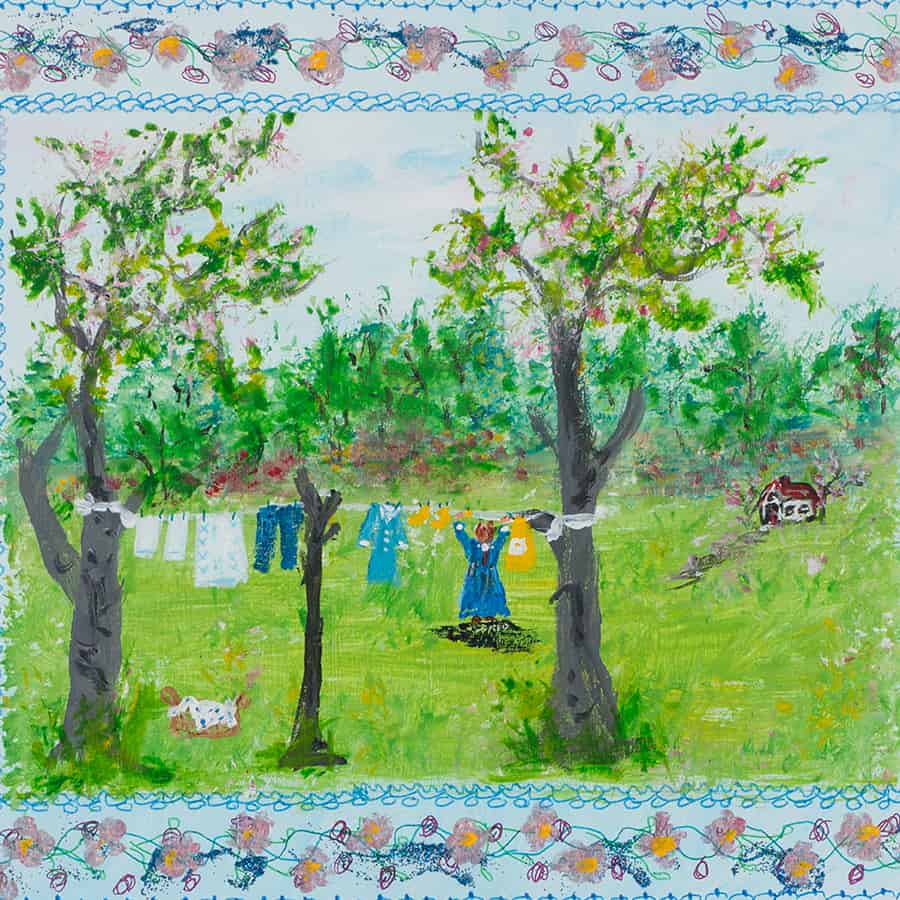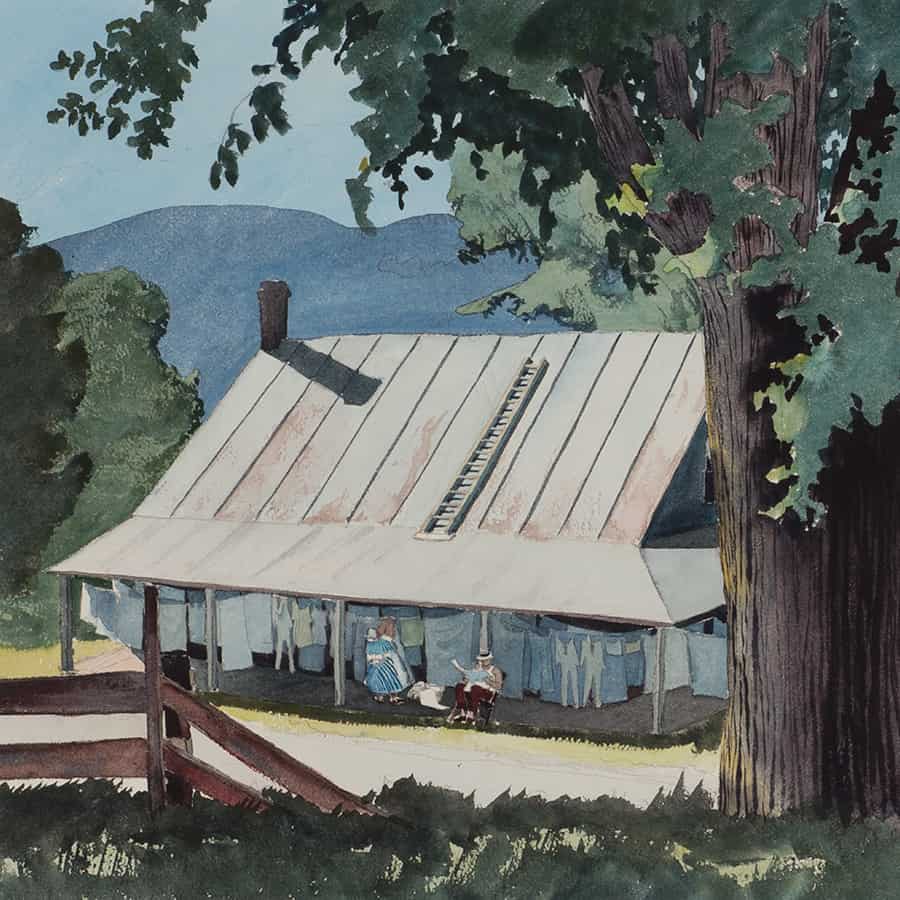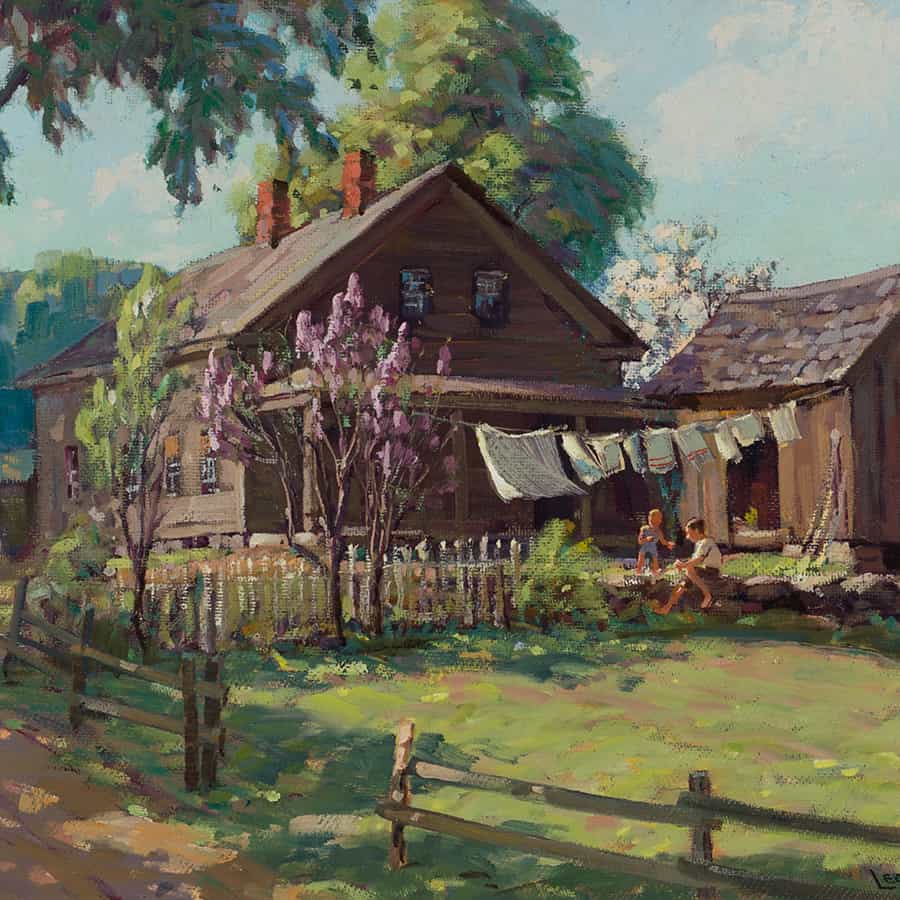Laundry
Among the most treasured works in The Orton Collection are several paintings of old homesteads that depict clothes, towels, and bed linens hung out to dry on a clothesline strung across the front porch or out by the barn. In Lyman’s words, “There is nothing more consistent with a Vermonter’s heritage of practicality, frugality, and common sense than hanging the washing outside and letting Mother Nature dry it with absolutely no use of energy. Sunshine and the breeze are free! It just doesn’t make sense not to use them! After all, clothes dryers use more energy than any other household appliance.”
Excerpt from the book For the Love of Vermont: The Lyman Orton Collection

Vermont Clothes Dryer, c.1980
Painting & Mixed Media | 8 x 10 in.
Dot Kibbee (1916-2016) GRACE Artist
Dot Kibbee was one of the GRACE program participants. This scene is done in oil on canvas with some bits of decorative trim as an inner frame. One of the characteristics of her style is repeats of patterns as decora¬tive borders. She was quoted as saying, “I don’t really know what I’m doing but I know it is good when my heart starts beating fast and my face gets all hot and red.”
Originally from Worcester, Massachusetts, she spent most of her life in Hardwick. She was the community nurse, and beginning in the mid-1980s, she was a “regular” at the GRACE workshops. Kibbee’s work became quite popu¬lar and well known beyond the community of GRACE artists and Hardwick. Some of her work was exhibited internationally.

Laundry Done, Reasonable Rates, c.1950
Watercolor on Paper | 16 ½ x 20 in.
Walton Blodgett (1908-1963)
Vermont is one of a handful of states in the nation that has a “Right to Dry” law, making it permissible to hang laundry outside on a clothesline, the rules and regulations of a condominium or homeowners association notwithstanding.
The title that Walton Blodgett gave his painting is evidence that washing, drying, and ironing other people’s dirty clothes and linens was one way for a Vermont farmwife to supplement her family’s income. “A hard way to earn a living,” says Lyman Orton, “especially since the husband in Blodgett’s painting isn’t lifting a hand as he sits on the porch reading the paper.”
Walton Blodgett is well represented in The Orton Collection by watercolors and serigraphs of outdoor views of Vermont. Blodgett was from Cleveland, Ohio, studied art in New York City, and in the mid-1930s was among the group of American Scene Painters under the Works Progress Administration (WPA) arts programs working at that time in Key West, Florida. He came to live and work in Stowe, Vermont, around 1941, and he stayed for twenty-two years.

Summer Laundry, c.1940
Oil on Masonite | 16 x 20 in.
Leo Blake (1887-1976)
The word “summer” in the title of this painting is the key: It is logical and pleasant to dry laundry outdoors in the summer, keeping in mind that in winter, items hung outside on a clothesline freeze stiff as boards. Frozen laundry cannot be dried, much less folded, until it is thawed. On any day that the temperature outside was below 32o Fahrenheit, everyone in old-time Vermont would have expected to find laundry spread out on wooden racks in every farm kitchen, set to dry by the wood-fired cookstove or a kerosene heater.
Leo Blake was originally from Galesburg, Illinois and studied at the Art Institute of Chicago. After a short burst of work as a commercial artist, he turned to fine art. He lived in Massachusetts, close to the Vermont state line, and found an affinity in painting scenes of Vermont.
